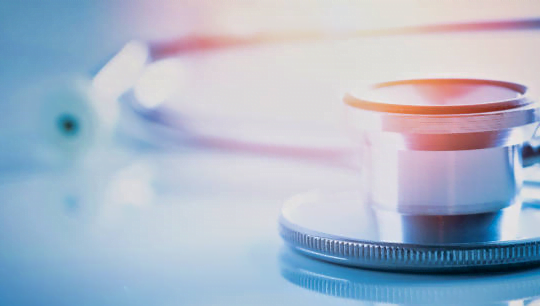Oxygen, the invisible and life-sustaining gas that makes up about 21% of Earth’s atmosphere, is arguably one of the most critical elements for human survival. While it’s easy to take breathing for granted, breathing techniques with the act of inhaling oxygen and expelling carbon dioxide plays an essential role in your overall health and wellness.
In this article, we will explore the crucial importance of humans getting enough oxygen. We will delve into the science behind oxygen’s role in our body, discuss various breathing techniques that can optimize our oxygen intake, and shed light on how oxygen deficiency can lead to a variety of diseases and health complications.
The Science of Oxygen
Before we dive into the significance of oxygen, let’s take a closer look at the science behind it. Oxygen is vital for various biological processes in the human body, primarily respiration and energy production. Here’s how it works:
Respiration
The process of respiration is a complex but incredibly efficient mechanism that begins when we inhale. Whether through our nostrils or mouth, the oxygen-rich air travels down our windpipe (trachea) and enters the lungs. Within the lungs, this life-giving gas enters the alveoli, tiny air sacs that resemble clusters of grapes. It’s within these alveoli that the magic happens. Oxygen molecules diffuse across the thin alveolar-capillary membrane and enter the bloodstream.
This is where hemoglobin, a crucial protein in red blood cells, enters the spotlight. Hemoglobin has a remarkable affinity for oxygen. When oxygen comes into contact with hemoglobin, a chemical reaction occurs, resulting in the formation of oxyhemoglobin. This is essentially oxygen hitching a ride on red blood cells. Once loaded up with oxygen, these red blood cells are carried by the bloodstream, ready to deliver their precious cargo to various cells, tissues, and organs throughout the body.
The delivery process is orchestrated by the heart, our body’s central pump. The heart propels oxygen-rich blood through the arteries, which branch out into smaller and smaller vessels, ultimately reaching every corner of our body.
This oxygen isn’t just a luxury for our cells; it’s an absolute necessity. Our cells are constantly at work, and they need a steady supply of oxygen to power their activities. Whether it’s a muscle cell contracting, a nerve cell transmitting signals, or a liver cell detoxifying our body, oxygen is an indispensable partner in these endeavors.
Energy Production
Oxygen’s significance doesn’t end with respiration; it extends to our cells’ powerhouses, the mitochondria. These tiny organelles are responsible for generating adenosine triphosphate (ATP), which is essentially the body’s energy currency. Think of ATP as the batteries that power your cell’s activities.
The process by which oxygen facilitates energy production is known as cellular respiration. During this complex biochemical process, glucose (sugar) and oxygen are metabolized within the mitochondria. Through a series of chemical reactions, these substances are transformed into carbon dioxide, water, and ATP. This chemical energy in the form of ATP is then used by our cells for everything from muscle contractions to maintaining body temperature.
Without an adequate oxygen supply, our cells cannot efficiently produce ATP. This can result in a feeling of fatigue, weakness, and decreased physical and mental performance. It’s why you may notice a marked drop in energy levels when climbing a high-altitude mountain or during strenuous exercise, where oxygen availability becomes limited.
Breathing Techniques for Optimal Oxygen Intake
Now that we understand how oxygen works in the body, it’s important to explore breathing techniques that can help us optimize our oxygen intake. Proper breathing not only ensures an adequate oxygen supply but also promotes relaxation and reduces stress. Here are some effective breathing techniques:
Diaphragm Breathing
Also known as deep belly breathing, this technique involves breathing deeply into the diaphragm rather than shallowly into the chest. To practice diaphragm breathing, sit or lie down comfortably, place one hand on your chest and the other on your abdomen, and inhale deeply through your nose. Feel your abdomen rise as you fill your lungs with air. Exhale slowly through your mouth, allowing your abdomen to fall. Repeat this process for several minutes.
Box Breathing
Box breathing, also called square breathing, is a technique used to regulate the breath and calm the nervous system. It involves inhaling, holding the breath, exhaling, and holding the breath again, each for a specified count (e.g., 4 seconds). This technique can be particularly useful for reducing stress and anxiety.
Pranayama
Pranayama is a yogic practice that focuses on controlling the breath to enhance physical and mental wellness. Various pranayama techniques can be beneficial, such as Anulom Vilom (alternate nostril breathing) and Bhramari (humming bee breath). These techniques help improve lung capacity and oxygen uptake.
Breath Awareness
Simply becoming more aware of your breath can be a powerful practice. Take moments throughout the day to pause and observe your breath without trying to change it. This mindfulness can help you identify and correct shallow or irregular breathing patterns.
By incorporating these techniques into your daily routine, you can enhance your respiratory efficiency and ensure that your body receives the oxygen it needs for optimal functioning.
The Consequences of Oxygen Deficiency
Now that we’ve explored the importance of oxygen and discussed techniques for optimizing our oxygen intake, it’s crucial to understand the dire consequences of oxygen deficiency. When our bodies don’t receive enough oxygen, a cascade of health issues can arise, ranging from mild to life-threatening:
Hypoxia
Hypoxia occurs when there is a lack of oxygen in the body’s tissues. Symptoms may include shortness of breath, confusion, and bluish skin or lips. Prolonged hypoxia can lead to organ damage.
Chronic Obstructive Pulmonary Disease (COPD)
Long-term exposure to inadequate oxygen levels, often due to smoking or environmental factors, can lead to COPD. This condition includes chronic bronchitis and emphysema, making it difficult for the lungs to take in enough oxygen and expel carbon dioxide.
Cardiovascular Issues
Oxygen deficiency can strain the heart as it works harder to pump oxygen-poor blood to the body’s tissues. Over time, this can lead to high blood pressure, heart failure, and other cardiovascular problems.
Cognitive Impairment
The brain is highly sensitive to changes in oxygen levels. Even brief periods of low oxygen (hypoxemia) can lead to cognitive impairment, memory problems, and difficulty concentrating.
Sleep Apnea
This sleep disorder causes interrupted breathing during sleep, leading to drops in oxygen levels. Sleep apnea is associated with daytime fatigue, mood disturbances, and an increased risk of cardiovascular disease.
Pulmonary Hypertension
Chronic oxygen deficiency in the lungs can cause pulmonary hypertension, a condition characterized by high blood pressure in the arteries of the lungs. This can lead to heart failure and respiratory failure.
The Role of Oxygen in Physical Performance
Beyond its fundamental role in sustaining life, oxygen plays a crucial role in physical performance. Athletes and fitness enthusiasts understand the importance of oxygen in enhancing endurance, strength, and overall fitness. Here’s how oxygen affects physical performance:
Aerobic vs. Anaerobic Exercise
Oxygen is the primary energy source for aerobic exercise. During activities like jogging, cycling, or swimming, where the intensity is moderate and sustained, your body relies on oxygen to break down glucose and fat to produce energy. This process is highly efficient and can be sustained for extended periods.
Delaying Fatigue
Adequate oxygen intake delays the onset of fatigue during physical activity. When your muscles receive a consistent oxygen supply, they can continue contracting efficiently, allowing you to exercise longer and more effectively.
Muscle Recovery
Oxygen plays a vital role in post-exercise recovery. After a workout, oxygen helps in clearing metabolic waste products such as lactic acid, reducing muscle soreness, and promoting quicker recovery.
Oxygen Transport
Oxygen is transported by the bloodstream to muscle tissues during exercise. An efficient cardiovascular system ensures that oxygen is delivered to the working muscles, optimizing performance.
Breathing techniques, such as controlled deep breathing, can be particularly beneficial during physical activities. Athletes often incorporate specific breathing patterns into their training to improve oxygen intake and maximize performance.
Environmental Factors and Oxygen Levels
The availability of oxygen can vary depending on your environment. Factors such as altitude, air quality, and pollution can significantly impact the oxygen levels you receive:
Altitude
As you ascend to higher altitudes, the atmospheric pressure decreases, which results in lower oxygen levels. This can lead to altitude sickness, characterized by symptoms like headaches, nausea, and fatigue. It also requires the body to adapt to the reduced oxygen levels over time, a process known as acclimatization.
Air Quality
Air pollution can reduce the quality of the air you breathe, making it harmful to your health. Pollutants in the air, such as carbon monoxide and particulate matter, can displace oxygen and affect lung function.
Indoor Air Quality
Poor indoor air quality due to factors like mold, smoke, or inadequate ventilation can lead to oxygen deficiency and respiratory problems. Ensuring good indoor air quality is essential for maintaining your health.
Promoting Oxygen-Rich Body Environments
To maintain optimal oxygen levels and promote overall health, consider the following lifestyle changes:
Regular Exercise
Engaging in regular physical activity improves your body’s ability to utilize oxygen efficiently. Aerobic exercises like jogging, swimming, and cycling are particularly effective in enhancing cardiovascular fitness.
Proper Nutrition
A balanced diet provides essential nutrients, including iron and vitamins, that support the production of red blood cells and hemoglobin, crucial for oxygen transport.
Stay Hydrated
Dehydration can reduce blood volume and oxygen delivery to cells. Ensure you stay adequately hydrated throughout the day.
Avoid Smoking
Smoking damages the lungs and reduces the oxygen-carrying capacity of blood. Quitting smoking is one of the most beneficial steps you can take for your respiratory health.
Air Quality
Be mindful of your environment. If possible, choose clean, well-ventilated spaces and minimize exposure to pollutants.
Breathing Exercises
Incorporate breathing exercises into your daily routine to optimize oxygen intake and reduce stress.
Conclusion
In the grand tapestry of human health, oxygen is undeniably one of the most critical threads. Breathing, the simple act of inhaling and exhaling, sustains our lives by supplying our cells, tissues, and organs with the vital oxygen they need to function optimally. By practicing effective breathing techniques and maintaining healthy habits, we can ensure that our bodies receive the oxygen they require for vitality and wellness.
Conversely, ignoring the importance of oxygen intake can have dire consequences, including a range of diseases and health complications. Thus, let us breathe deeply, mindfully, and consciously, for in the air we breathe lies the key to a healthier and happier life. Remember that the way you breathe today can determine how you live tomorrow, making the quest for optimal oxygen intake a journey worth pursuing for a healthier and happier life.







